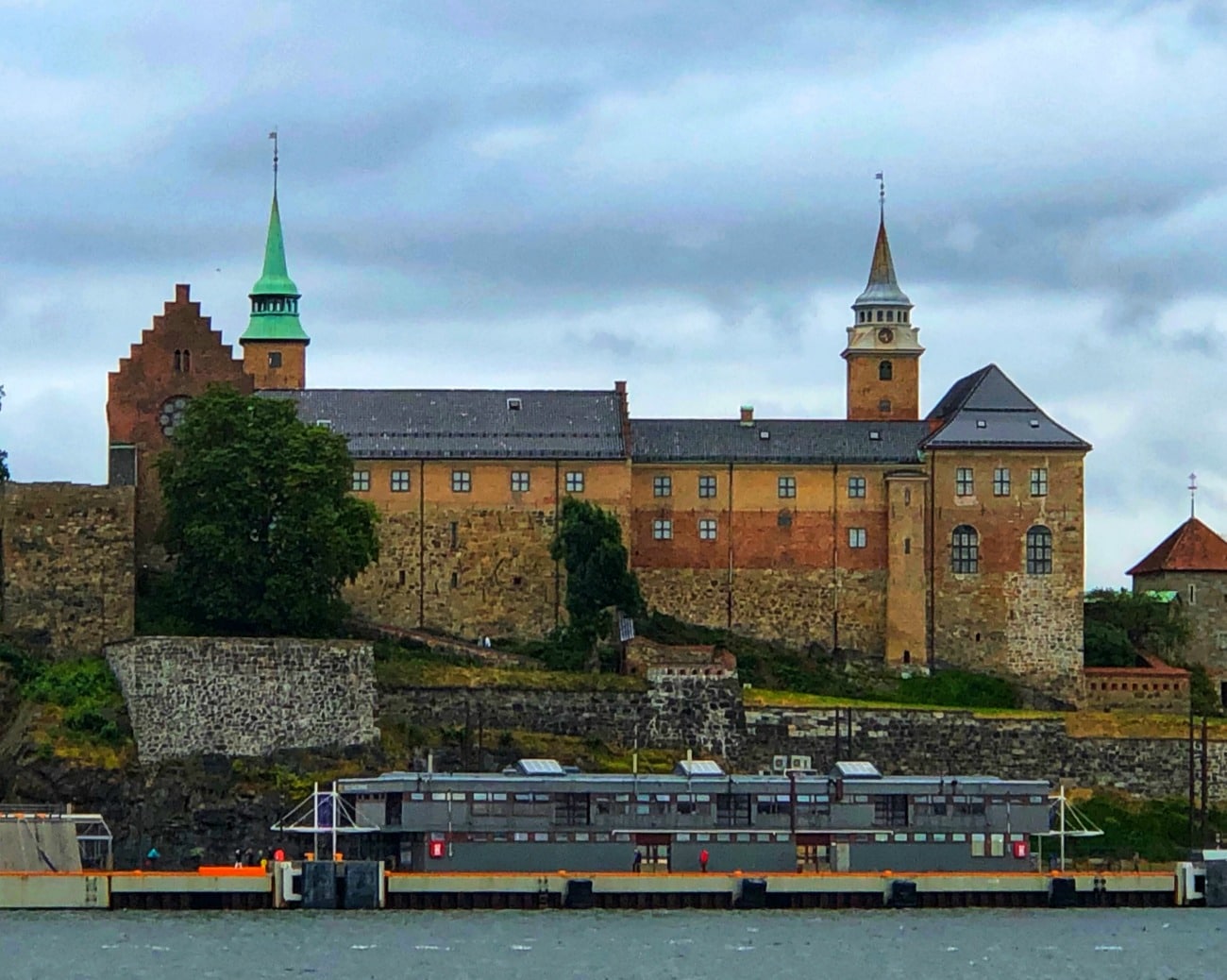Situated on the Oslo Fjord, Norway’s largest city provides an interesting juxtaposition of past and present. Nowhere is this more evident than in its architecture. Standing guard over the city beside the harbor, the Akershus Fortress and castle date back to medieval times. Meanwhile, in the Bjørvika neighborhood of central Oslo, the Oslo Opera House’s angled white exterior seemingly rises from the surrounding waters. Having visited Oslo some years ago in winter for just a day, I was anxious to see more of the highlights and had three days to do it. Armed with an Oslo Pass and the Visit Oslo app downloaded on my phone, I set off to explore this fascinating city.
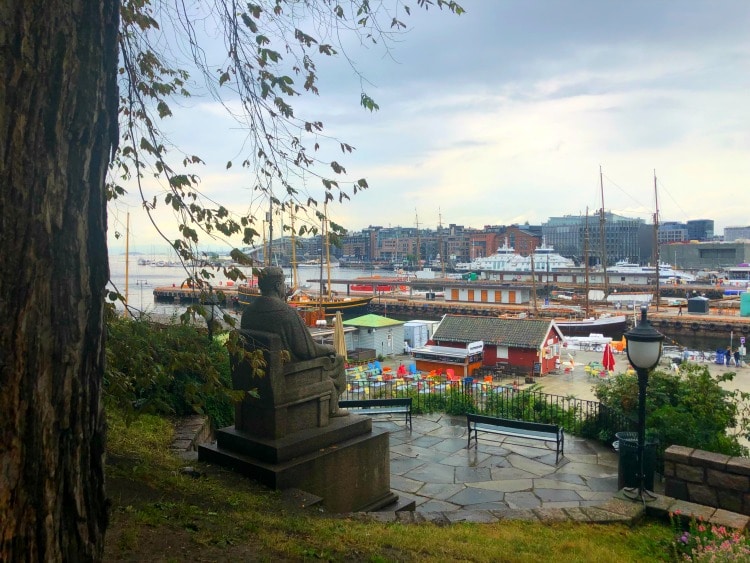
Day 1: The City Center
With no set itinerary, my first day began with a walk around Oslo’s harbor. Art is everywhere in this creative city and I was surprised to find a statue of Franklin D. Roosevelt overlooking the harbor. A friend to the Norwegians during World War II, his likeness continues to watch over the city not far from Oslo’s City Hall.
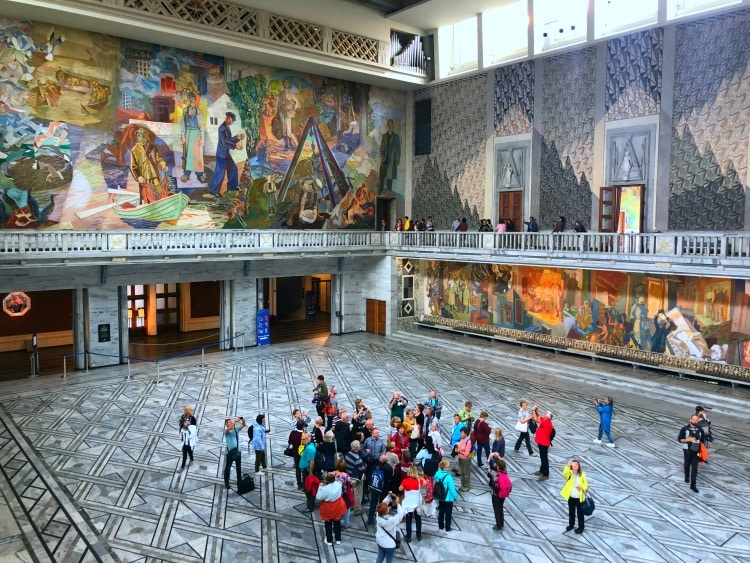
City Hall
Admittedly, the local municipal buildings aren’t always on one’s must-see list, but Oslo City Hall, Rådhuset, isn’t your average municipal building and it was my first stop. Decorated with magnificent Norwegian art throughout, the building tells the story of Norway’s culture and history. In the courtyard, artist Dagfin Wereinskiold created 16 wooden friezes depicting Norse mythology. Pictured below is one of my favorites, the Swan Maidens, Alrund, Svankit & Alvit. Legend says that they flew to earth as swans then transformed into beautiful maidens. Three brothers fell in love with them and married them only to be devastated when they flew away 7 years later. That’s a pretty serious 7-year itch.
In summer, free guided tours are offered throughout the day, but wandering through on your own is also possible when they are not available.
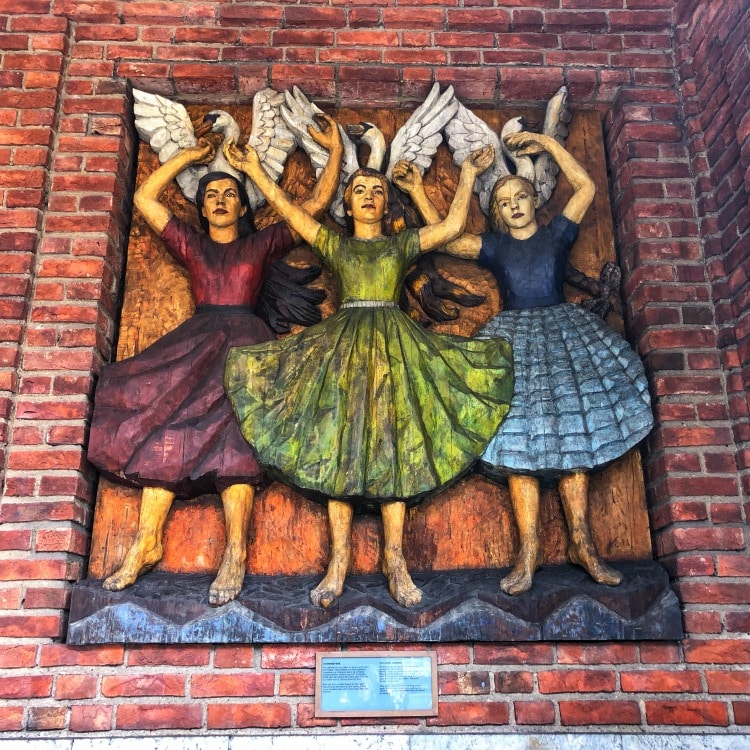
Oslo Opera House
Joining many other visitors to Oslo, my next stop was the Oslo Opera House. Home of the Norwegian National Opera & Ballet, performances span three stages: the Main House with 1,369 seats; Second House with 400 seats; and the Studio with 200 seats. While I’m certain any performance would be magnificent, I wasn’t there for the performances; I wanted to walk on the roof. Masterfully designed by Norwegian architecture firm Snøhetta, the angled white exterior invites locals and tourists to stroll atop the venue. Large-scale windows provide a glimpse of rehearsals and workshops. I highly recommend enjoying a glass of wine on the terrace once your rooftop walk is finished.
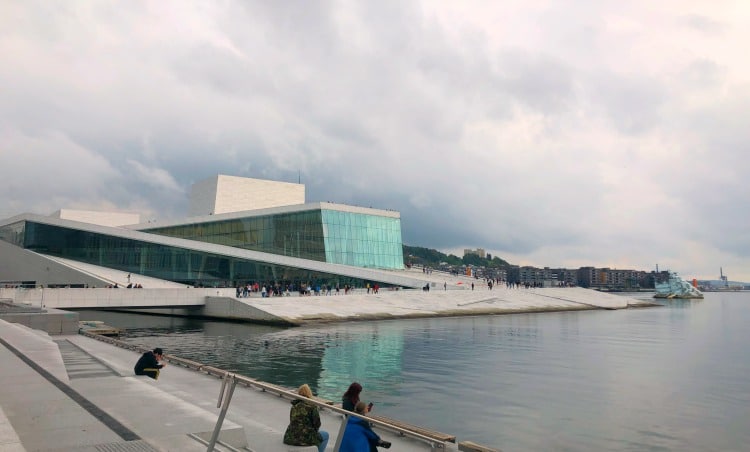
Day Two: Enjoying the Sunshine
Vigeland Park & Museum
Awaking to sunny skies for day two, the Vigeland Park & Museum in Oslo’s Frogner neighborhood beckoned. What better place to spend a sunny day than in a park displaying more than 200 sculptures crafted by the brilliant Gustav Vigeland, along with hundreds of flowers. I wasn’t alone in my thinking as throngs of tourists posed beside the sculptures lining the park’s central bridge, including my favorite, the “Angry Boy” who was subjected to more selfies than anyone —stone or human—should have to endure. I’d be angry too!
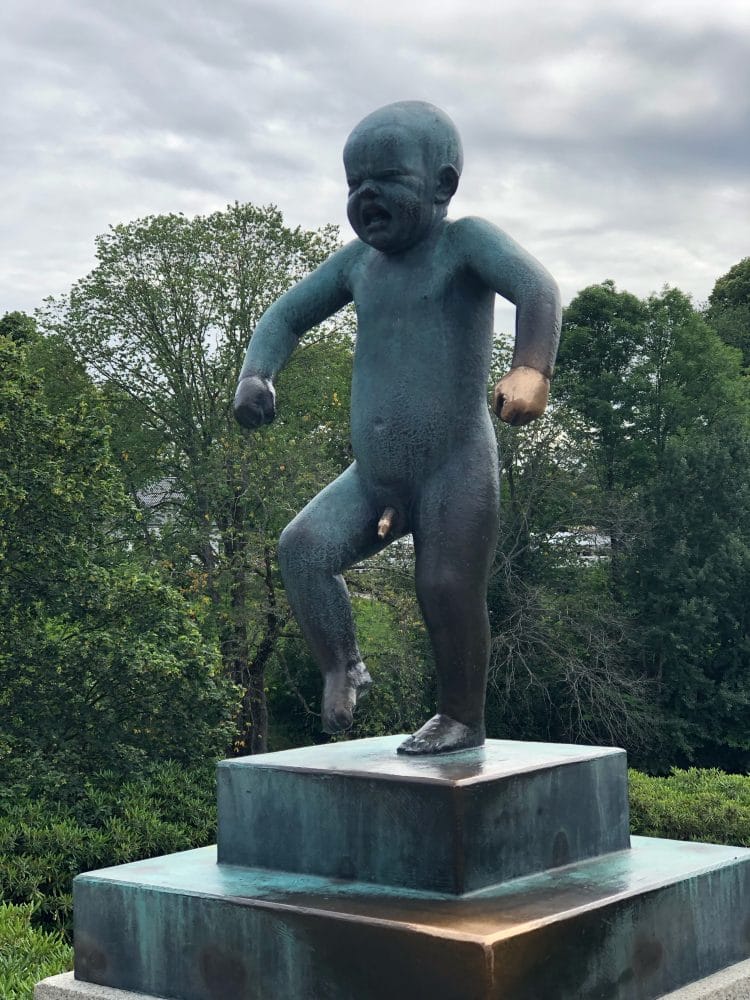
Standing at the highest point, the Monolith depicts 121 human figures of varying ages clinging and floating together and crowned with children at the top. Many interpret the sculpture as a vision of resurrection. Vigeland declared, “the column is my religion. Through these sculptures and the saucer-like fountain supported by six giants, themes of life’s evolving stages emerge: childhood, adolescence, adulthood, old age and death. The sculptures also depict themes of play, lust, energy and vitalism.
Gustav Vigeland was a persuasive soul and persuaded the city to build him a combined home and studio in exchange for a donation of his works to the city. Today that home is part of the Vigeland Museum located within the park.
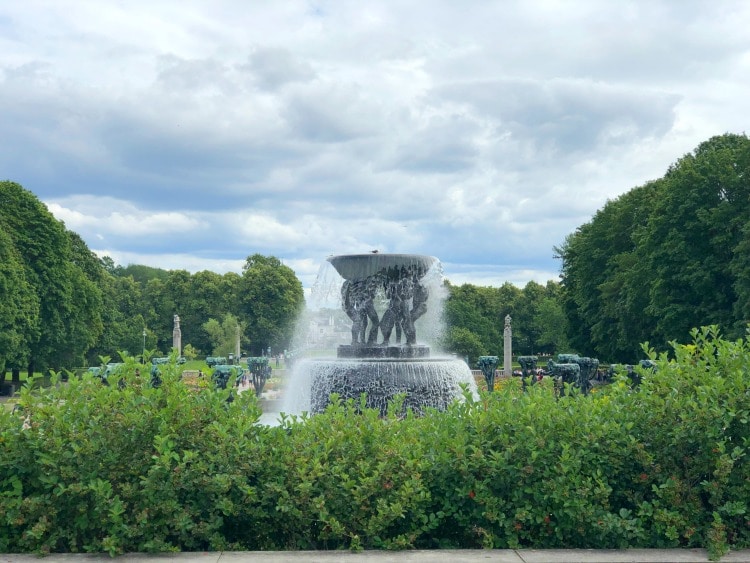
Day 3: History, Vikings and Adventurers
With rain in the forecast for my third day in Oslo, museums filled the agenda and there were more than enough to visit – each with a unique story to share.
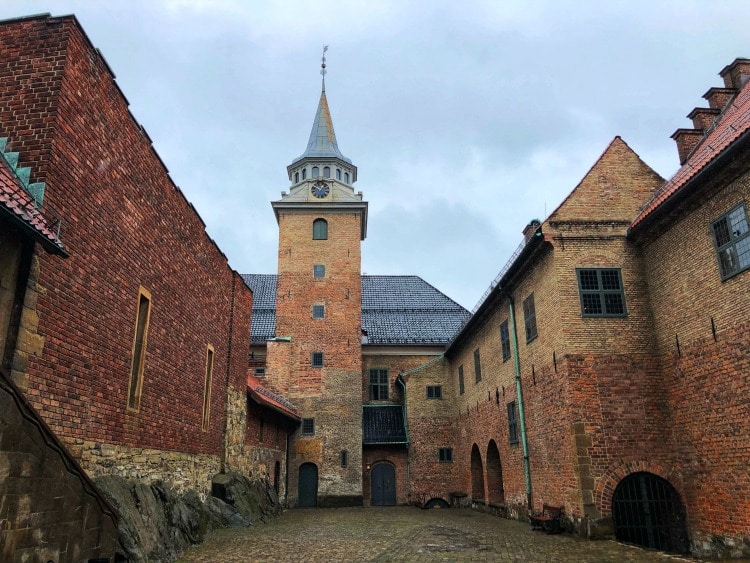
Akershus Fortress & Castle
Standing watch over Oslo harbor, Akershus Fortress and Castle drew me in for a closer look. Dating from 1299, this medieval castle and royal residence developed into a fortress in 1592 and was rebuilt into a renaissance castle in the 17th-century. Massive banquet halls, the Royal Mausoleum and a somewhat spooky dungeon are among the highlights. The small historic church within the castle walls remains the home of the royal sarcophagi. Guided tours are offered in summer, but I chose to wander on my own with a headset which provided historic details as well as intriguing ghost stories.
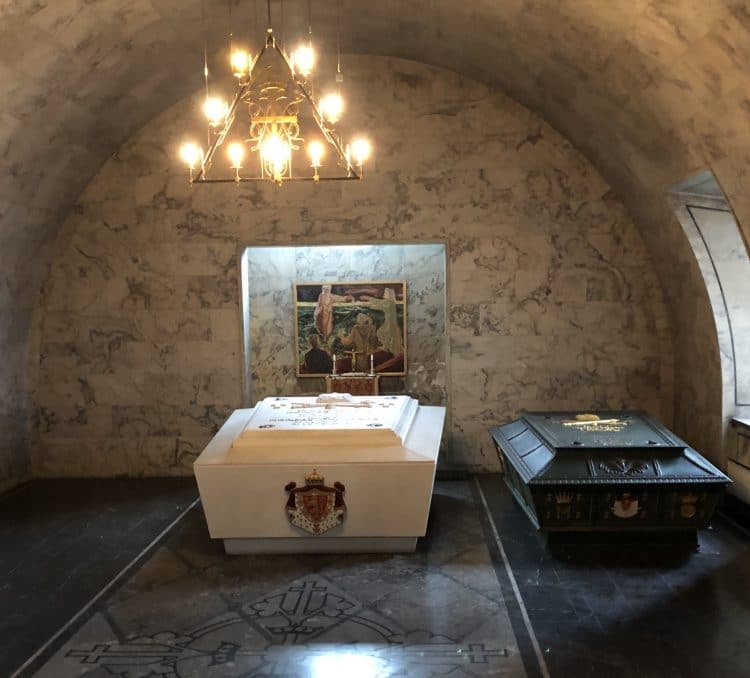
Viking Ship Museum
An integral part of Norway’s history, the Vikings ruled the country between AD 800 to 1066. Known primarily as warriors and explorers, the Vikings’ unprecedented insight into shipbuilding and navigation brought them to America 500 years ahead of Columbus. Encapsulated at the Viking Ship Museum the Gokstad, Oseberg and Tune ships date back as far as 890 AD and showcase those talents. Additional discoveries on display include remarkably well-preserved tools, textiles, furniture and a collection of small boats. Be sure to take note of the incredibly intricate wood carvings.
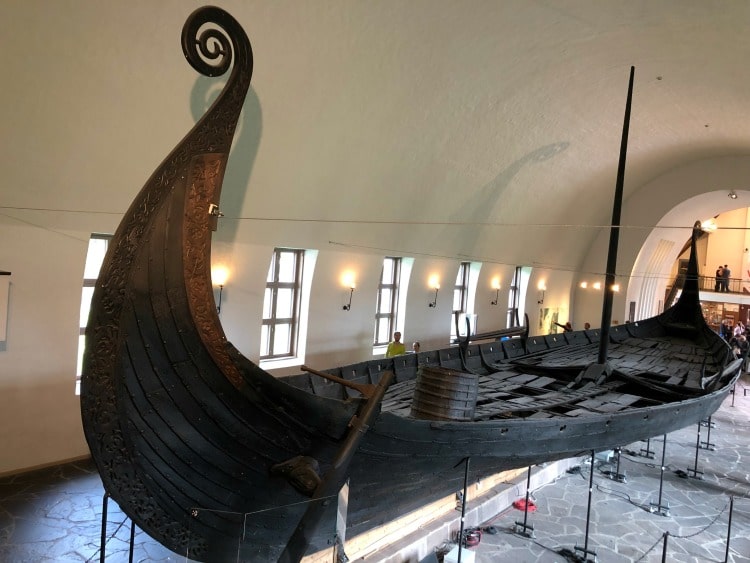
Fram Museum
A few years ago I joined an expedition to Antarctica, however, I was on a ship made of steel. At the Fram Museum, the wooden ship Fram still holds the record for sailing the farthest north and south to the Arctic and Antarctica. Exhibits onboard the well-preserved Fram portray life onboard the ship for the crew and their dogs as they ventured into the world’s most unforgiving landscapes. Trust me when I say the accommodations for my journey were much more comfy. Additional exhibits describe the trials and successes of these intrepid journeys.
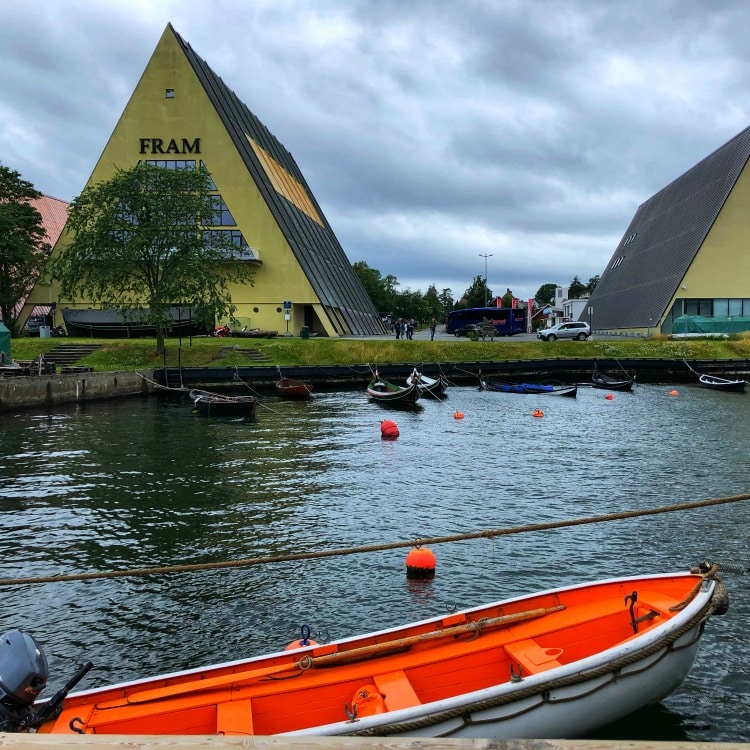
Despite the moody skies looming over the fjord as I rode the ferry back to Oslo harbor, one thing was crystal clear … there’s always so much more to discover in this fascinating city.
[alert type=white]
The country code for Norway is +47.
Where to Stay:
Thon Hotel Panorama – Centrally located within easy walking distance from Oslo’s best attractions including the Opera House and Oslo’s Central Station. Thon Hotel Panorama offers stylish colorful rooms and an expansive buffet breakfast. Rådhusgata 7B, 0151 Oslo; Tel. +47 23 31 08 00; www.thonhotels.com
The Thief – Located in the trendy Tjuvholmen arts district, The Thief offers an international art collection, Nordic cuisine with global inspiration, a rooftop bar and a luxurious spa to steal you away from your everyday life. Landgangen 1, 0252 Oslo; Tel. +47 24 00 40 00; www.thethief.com
Where to Eat
Oslo has an abundance of excellent restaurants of every variety. But it’s hard to beat the fresh fish and seafood offerings. Here are a couple of my favorite places for fish.
Tjuvholmen Sjomagasinet – Sleek contemporary stylings with lovely views and unforgettably delicious grilled fish and seafood entrees—this upmarket eatery has it all. Tjuvholmen allé 14, 0252, Oslo; Tel. +47 23 89 77 77; www.sjomagasinet.no/en
Mr. Hook – Rather than take the time to stop for a leisurely lunch, I chose to try the fish burger at Hook Food Truck located near the Oslo Harbor. A blend of salmon and cod with fresh parsley dressing, coleslaw and sundried tomato paste, the Mr. Green burger was outstanding. You’ll find it among the other food trucks just outside the Nobel Peace Center.
What to See and Do
Your ticket to all the best Oslo has to offer is the Oslo Pass which provides admission to attractions, discounts at area restaurants and public transportation. Download the Visit Oslo app for details on pass benefits throughout the city. The Oslo Pass can be purchased at the visitor’s center at Oslo Central Station or online. www.visitoslo.com
Oslo City Hall (Rådhuset) – Free admission and tours open daily from 9:00 AM to 4:00 PM. Rådhusplassen 1, 0037 Oslo; Tel. +47 23 46 12 00; www.oslo.kommune.no
Oslo Opera House – Experience a performance or just walk on the roof at this Oslo treasure. Kirsten Flagstads Plass 1, 0150 Oslo; Tel. + 47 21 42 21 21; www.operaen.no
Vigeland Park & Museum – See the sculptures and learn more about Gustav Vigeland at Vigeland Sculpture Park. Nobels gate 32, 0268 Oslo; Tel. +47 23 49 37 00; www.vigeland.museum.no
Akershus Fortress & Castle – Walk through Norwegian history at this medieval fortress and castle. 0150 Oslo; Tel. +47 23 09 39 17; www.forsvarsbygg.no
Viking Ship Museum – Use your Oslo Pass and take the bus to Bygdøy peninsula to check out the amazing Viking ships. Huk Aveny 35, 0287 Oslo; Tel. +47 22 13 52 80; www.khm.uio.no
Fram Museum – Learn about polar exploration aboard the Fram. Bygdøynesveien 39, 0286 Oslo; Tel. +47 23 28 29 50; www.frammuseum.no
[/alert]

